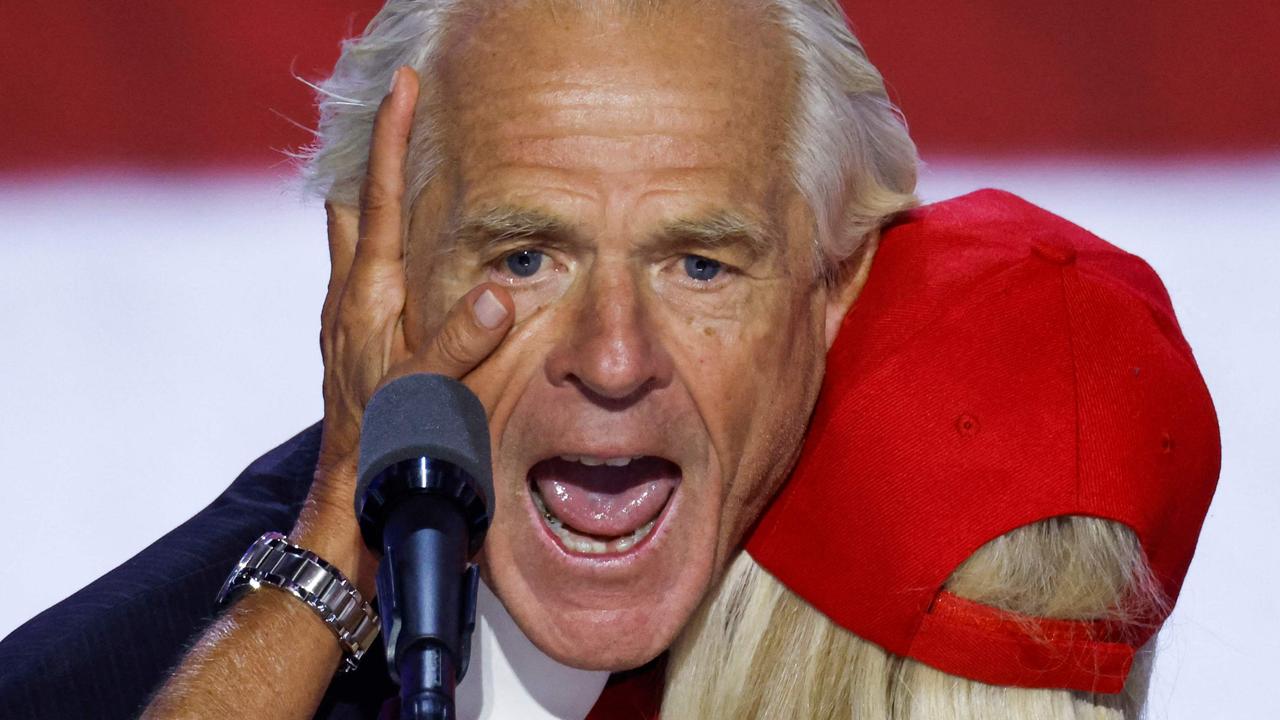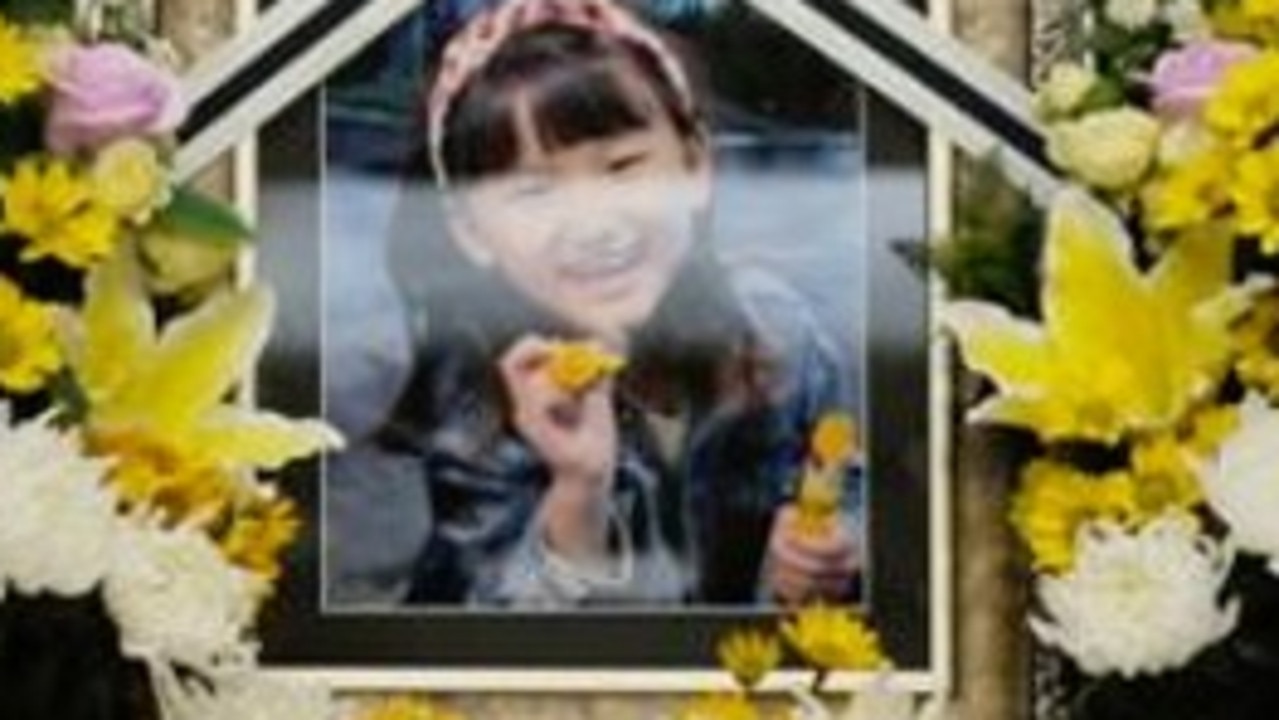US military strike targets ISIS-K in Kabul, three children killed
The US has carried out another drone strike in Kabul against suicide ISIS-K bombers, killing three children. WARNING: Graphic
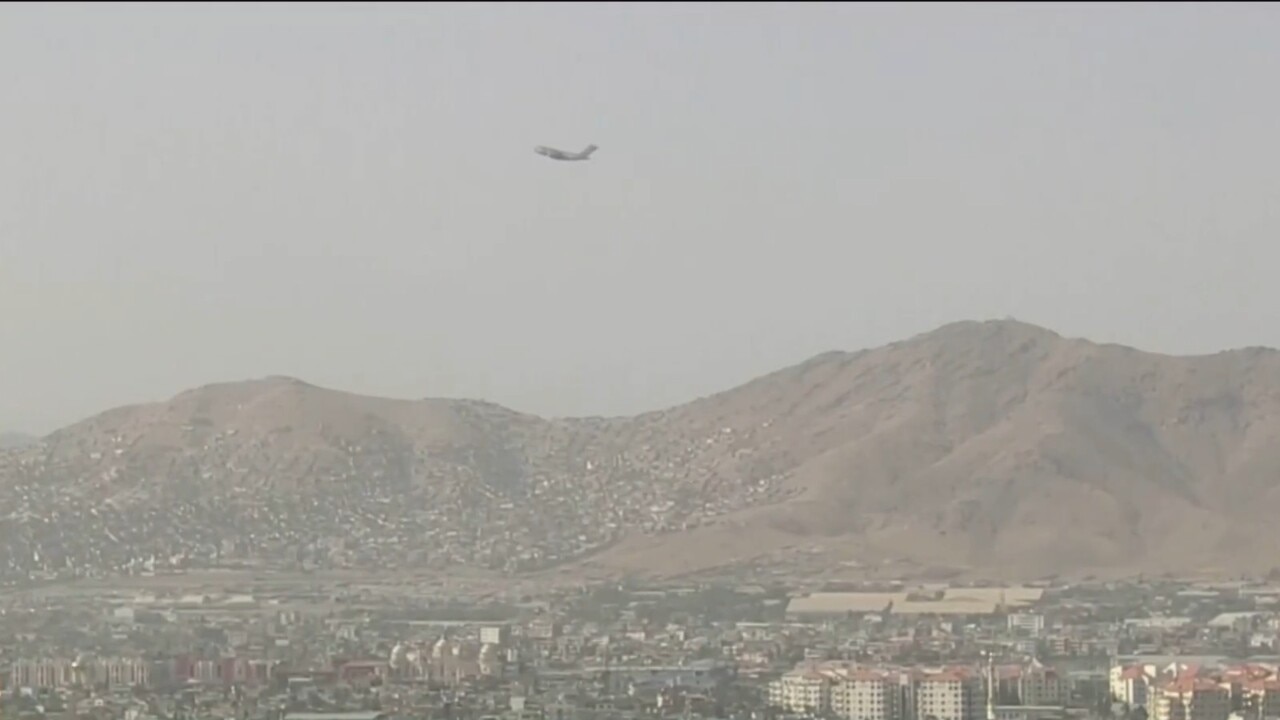
World
Don't miss out on the headlines from World. Followed categories will be added to My News.
Three children were reportedly killed in a US drone strike in Kabul, targeting multiple ISIS-K suicide bombers headed for Kabul’s international airport.
The deaths were reported by Associated Press after speaking to an Afghan official who remained anonymous due to security concerns.
It comes after US Central Command (CENTCOM) confirmed the air strike took place, which targeted a single vehicle in the Afghan capital.
Bill Urban, a spokesman for CENTCOM said: “US military forces conducted a self-defense unmanned over-the-horizon air strike today on a vehicle in Kabul, eliminating an imminent ISIS-K threat” to Hamid Karzai International airport.
“Significant secondary explosions from the vehicle indicated the presence of a substantial amount of explosive material,” he said, adding that there were “no indications at this time” of civilian casualties.
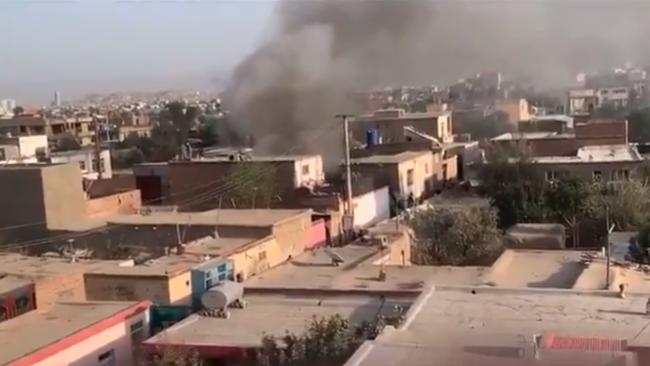
Taliban spokesman Zabihullah Mujahid also confirmed the air strike targeted the bombers who had plans to hit the airport.
It comes as a loud blast was also heard in the Afghan capital Kabul on Sunday by AFP journalists, hours after US officials warned of the possibility of a terror attack.
A security official from the recently deposed government told AFP it was a rocket that “initial information shows hit a house”.
A child was killed in the blast according to an Afghan police chief, and was reportedly among two people killed and three others injured.
It’s not clear if the strike and blast are linked.

The rocket attack struck Kabul’s Khuwja Bughra neighbourhood, said Rashid, the Kabul police chief who goes by one name.
Video obtained by The Associated Press in the aftermath of the attack showed smoke rising from building at the site around a kilometre from the airport.
No group immediately claimed the attack, however militants have fired rockets in the past.
The two incidents come as suicide bomb threats have hung over the final phase of the US military’s airlift operation from Kabul, with President Joe Biden warning another attack was highly likely before the evacuations end.
Social media images and video show a plume of smoke from the explosion.
Updates:
— Shafi Karimi (@karimi_shafi) August 29, 2021
A house near to Kabul airport hit by a rocket. pic.twitter.com/t3Ue3AXD0s
Kabul explosion pic.twitter.com/lqaDuOmYa8
— Muslim Shirzad (@MuslimShirzad) August 29, 2021
More than 112,000 people have fled Afghanistan via the massive US-led evacuation since the Taliban movement swept back into power a fortnight ago, and the operation is winding down despite Western powers saying thousands may be left behind.
What had already been a chaotic and desperate evacuation turned bloody on Thursday when a suicide bomber from the local chapter of the Islamic State group targeted US troops stopping huge crowds of people from entering the airport.
More than 100 people died in the attack, including 13 US service personnel, slowing down the airlift ahead of Biden’s deadline for evacuations to end by Tuesday.
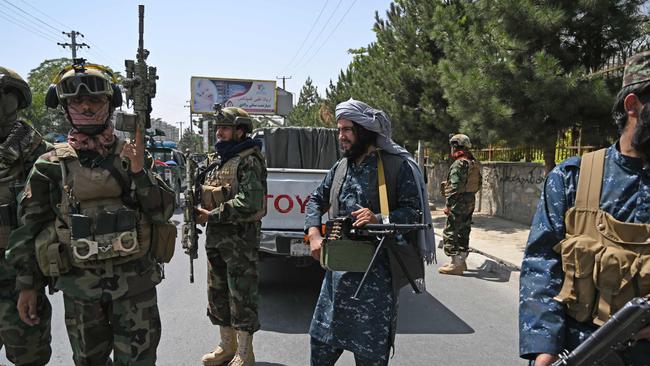
The Pentagon said Saturday that retaliation drone strikes had killed two “high-level” IS jihadists in eastern Afghanistan, but Biden warned of more attacks from the group.
“The situation on the ground continues to be extremely dangerous, and the threat of terrorist attacks on the airport remains high,” Biden said.
“Our commanders informed me that an attack is highly likely in the next 24-36 hours.”
The US embassy in Kabul later released an alert warning of credible threats at specific areas of the airport, including access gates.
BIDEN IN SOLEMN RITUAL FOR FALLEN SOLDIERS
In a silence broken only by the sobs of bereaved families, Joe Biden stood Sunday local time, hand over his heart, to pay tribute as the remains of the US service members killed in the Kabul bombing attack were transferred from a military C-17 cargo plane to a closely parked row of grey hearses.
The moving ritual played out on the tarmac of Dover Air Force Base in Delaware, with Biden and his wife Jill standing somberly to the side as specially trained white-gloved military crews, stepping softly and in perfect unison, transferred the remains in special metal cases to the waiting hearses.
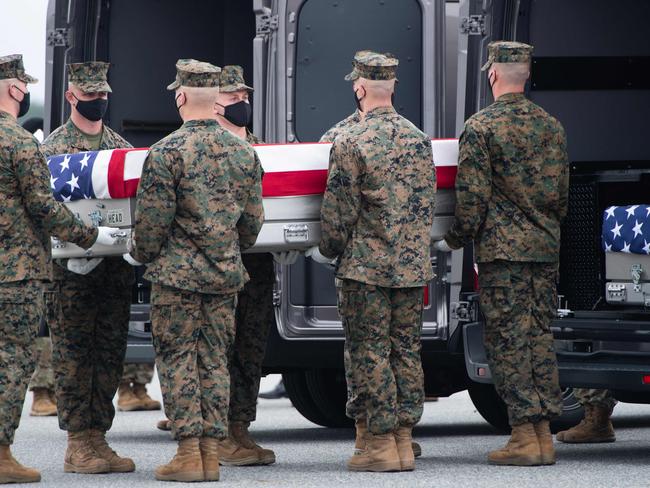
Defense Secretary Lloyd Austin, Secretary of State Antony Blinken and other military officers and dignitaries were part of a small group joining Biden, all in black masks.
Under a heavy grey sky, family members stood at a distance, protected from the glare of cameras.
The Dover base, on the US East Coast about two hours from Washington, is synonymous with the painful return of service members who have fallen in combat.
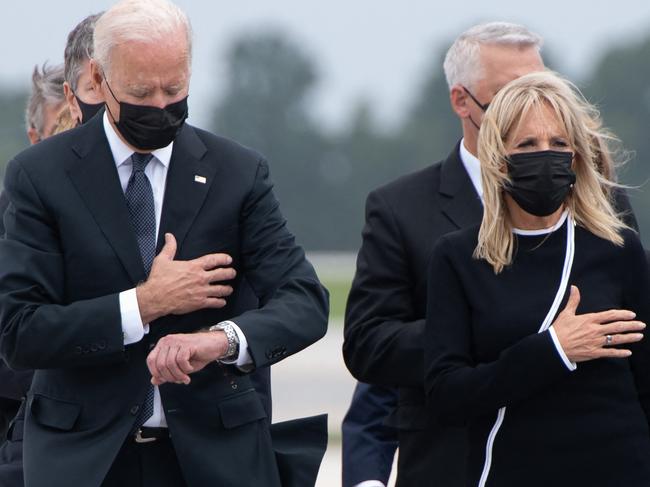
Meeting the remains of fallen service members at Dover is considered one of the most solemn duties of a US president.
Biden, during a speech on Hurricane Ida later Sunday in Washington, DC called the soldiers – some of whom were aged just 20, the length of the war in Afghanistan – “heroes.”
“Let’s keep them in our prayers,” he said, declining to take further questions on Afghanistan.
For Biden – whose late son Beau Biden served in Iraq – the loss must have been particularly painful.
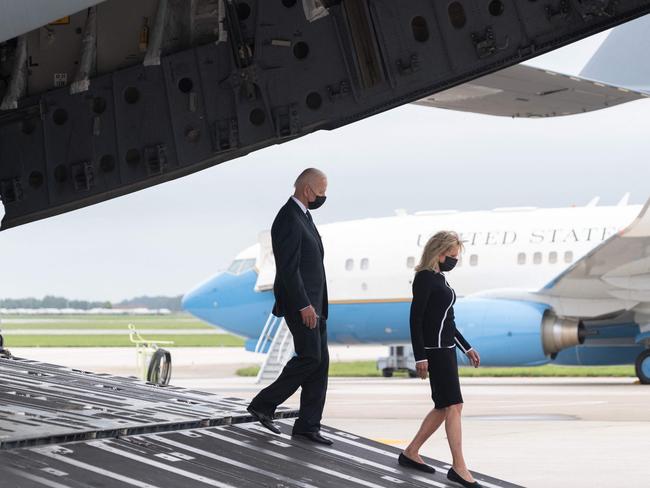
TALIBAN’S SUPREME LEADER SET TO MAKE PUBLIC APPEARANCE
In the days since taking power in Afghanistan, a wide range of Taliban figures have entered Kabul - hardened commandos, armed madrassa students and greying leaders back from years of exile.
There has been one major exception - the group’s supreme leader. But the Taliban confirmed on Sunday that Hibatullah Akhundzada is in Afghanistan and could soon make a public appearance for the first time.
“He is present in Kandahar. He has been living there from the very beginning,” said Taliban spokesman Zabihullah Mujahid.
“He will soon appear in public,” added deputy spokesman Bilal Karimi. Akhundzada - the so-called commander of the faithful - has shepherded the Taliban as its chief since 2016 when snatched from relative obscurity to oversee a movement in crisis.
After taking the insurgency’s reins, the cleric was tasked with the mammoth challenge of unifying a jihadist movement that briefly fractured during a bitter power struggle.
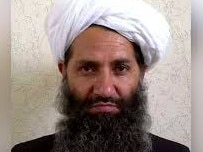
The infighting came as the group was hit with successive blows - the assassination of Akhundzada’s predecessor and the revelation that its leaders had hidden the death of Taliban founder Mullah Omar.
Little is still known about Akhundzada’s day-to-day role, with his public profile largely limited to the release of annual messages during Islamic holidays.
Apart from a single photograph released by the Taliban, the leader has never made a public appearance and his whereabouts remain largely unknown.
Since taking control of Kabul in mid-August, the group had until now remained tight-lipped about Akhundzada’s movements.
“You will see him soon, God willing,” Taliban spokesman Zabihullah Mujahid told reporters earlier this week when asked about Akhundzada’s whereabouts.
The comments came as the heads of various Taliban factions have openly preached in Kabul’s mosques, met with opposition figures, and even chatted with Afghan cricket officials in recent days.
NEW CALL FOR AFGHAN ‘SAFE ZONE
France and Britain will on Monday will urge the United Nations to work for the creation of a “safe zone” in the Afghan capital Kabul to protect humanitarian operations, French President Emmanuel Macron said.
“This is very important. This would provide a framework for the United Nations to act in an emergency,” Macron said in comments published in the weekly Journal du Dimanche.
Above all such a safe zone would allow the international community “to maintain pressure on the Taliban,” who are now in power in Afghanistan, the French leader added.
The five permanent members of the UN Security Council — France, Britain, the US, Russia and China — will meet on Monday to discuss the Afghanistan situation.
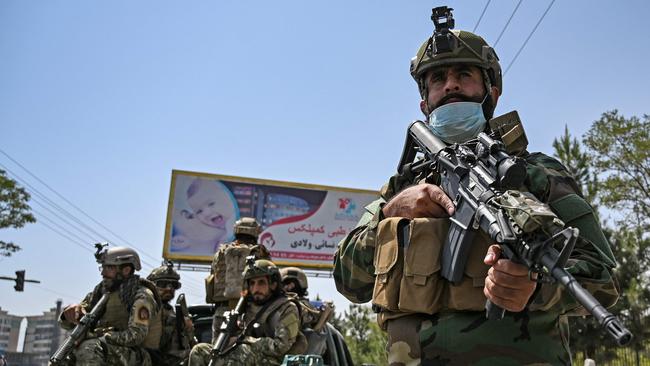
Paris and London will take the opportunity to present a draft resolution which “aims to define, under UN control, a ‘safe zone’ in Kabul, that will allow humanitarian operations to continue”, Macron said.
“This project is completely feasible,” he said on a visit to Mosul in Iraq, after vowing to keep troops in the country.
“I am very hopeful that it will be successful, I don’t see who could be against making humanitarian projects secure.”
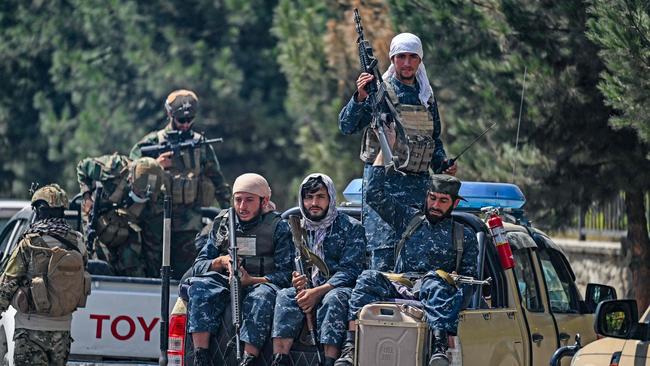
QANTAS JOINS AFGHANISTAN MISSION
Qantas has joined the biggest air evacuation in history to help repatriate hundreds of citizens and Afghans to Australia, joining a dozen other commercial airlines largely from the US.
For the Australian national carrier, such missions follow a long and proud history of flying humanitarian flights into conflict and crisis, from flying troops directly to the frontline during World War II to Covid-19 rescues in Wuhan and now Afghan airlift refugees today.
The Qantas Boeing 787-9 Dreamliner flew from Sydney and landed at the Australian Defence Force’s main operating base in the UAE to collect those that had arrived on RAAF aircraft in previous days from the volatile Hamid Karzai International Airport in Kabul.
Defence said working under Operation Accordion, the Qantas flight was the first to arrive and would “take Australian citizens and approved foreign nationals to Australia after being evacuated from Kabul”.
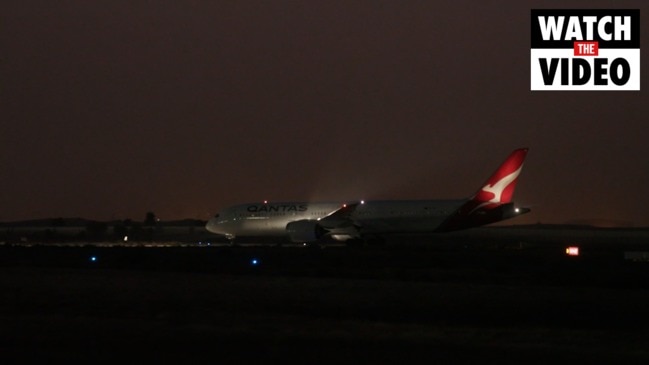
Earlier last week the Pentagon activated its Civil Reserve Air Fleet as it called up six airlines and at least 18 commercial aircraft including from Delta Air, United Airlines, American Airlines, Hawaiian Airlines, Atlas Air and Omni Air to join the evacuations.
It’s a program that was designed in the wake of the Berlin airlift – which Australia was also involved in – post World War Two to use commercial aircraft to augment airlift capacity on military missions and was last used for the Iraq War in 2003.
The limited number of aircraft is just one of the issues facing the evacuation from Afghanistan and the wider region that has evacuees being sent to a dozen holding countries. Bahrain has used its Gulf Air aircraft to move some evacuees to the US.
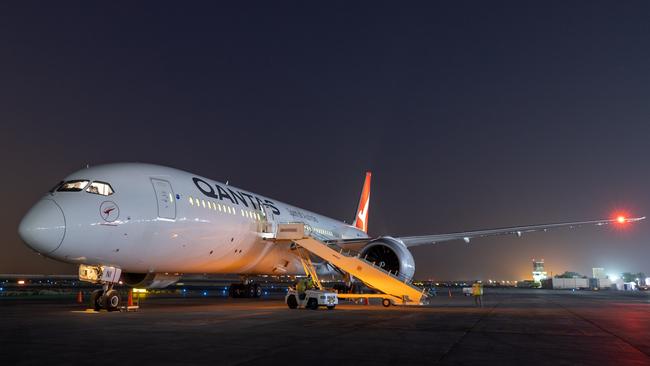
During the Vietnam War Qantas was dubbed the “Skippy Squadron” for its repeated flights bringing Australian troops in and out of Saigon.
There were reports from crews of gunfire and rockets being fired around the perimeter of the airport while they were on the ground as there would be years later in 1993.
In January that year a Qantas B747 made two flights as it joined the ADF’s Operation Solace and delivered 644 soldiers, mostly from 1RAR in Townsville, to Mogadishu “war zone” as part of a UN backed mission to regain order in the country torn apart by feuding warlords.
On one flight, the QF721 designated charter came under fire while on the tarmac from rebels outside the airport perimeter.
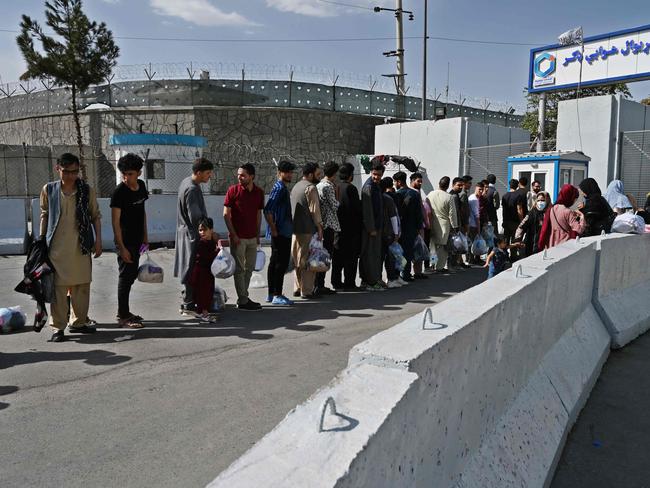
US Marines had control of airport security and rushed troops to where the volley of shots was thought to have been made, ordering 350 ADF out in the open apron to take cover. The Australians on the tarmac were unimpressed, left not only with little cover but no weapons with firearms and ammunition still in bubble wrap in the hold of the Qantas jumbo.
They were delayed in disembarking because the Americans had forgotten to send trucks to collect them and their kit.
During World War II, a Qantas Lodestar aircraft flew US and Australian troops directly into a frontline airfield near Buna in northern New Guinea in late 1942, dodging Japanese fighters as they made their way in and out.
Two Qantas Empire flying boats were however shot down in the early days of the war in the Pacific in January and February 1942, including one shot down by seven Japanese Zero fighters in the Dutch East Indies during a refugee evacuation flight killing 13 on board. Five others were injured but survived. Less than a month later and all 20 passengers and crew were killed after being shot down by Japanese fighters between East Indies and Broome.
In 2020 Qantas performed two flights to Wuhan, the epicentre of the coronavirus outbreak and has since made more than 100 flights to collect stranded Aussies around the globe affected by the Covid pandemic shutdowns.
More Coverage
Originally published as US military strike targets ISIS-K in Kabul, three children killed
Read related topics:Afghanistan



